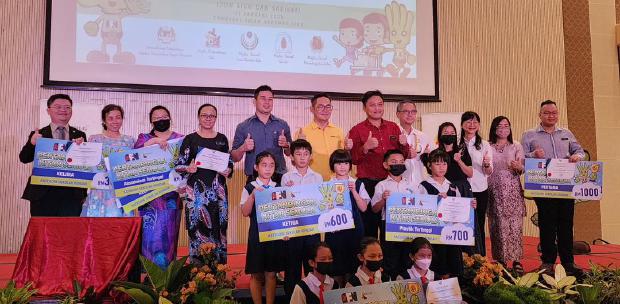Having recently received a letter from my former student, Tie Teck, now a teacher at SMK Tinggi Sarikei in Sarawak, I remember visiting him in October several years ago.
Tie was one of the best students of a group of Chinese teachers who studied at Universiti Malaya on a special joint teacher training programme designed by the Faculty of Languages and Linguistics.
These students studied with great enthusiasm and they came to me to study Russian.
They completed the initial course and demonstrated their knowledge by taking part in a Russian song karaoke competition at the Russian Centre for Science and Culture.
The warm and friendly relations were established between us, and together we made excursions to remarkable places in the vicinity of Kuala Lumpur, including the forest reserve in Kepong. We visited the Forest Research Institute Malaysia Museum there, wandered along the narrow paths in the carefully preserved jungle and played games.
After graduating, the students went back to their homes all over the country. Tie returned to Sarawak. After a while, he invited me to his place.
It was an unforgettable visit. While Tie was busy at school, I wandered around Sibu or Sarikei alone, enjoying Sarawak cuisine, fruits and, of course, durian.
I must confess that the smell of durian attracted me like a magnet, and I could not leave the market without eating it.
I went up to the pile of fruits, chose a large durian, took it in my hands and sniffed it.
The smell should be sharp and spicy even through a thick peel. I asked the seller to cut the fruit a little. I studied the flesh, how juicy it was. Satisfied, I nodded my head.
The seller weighed and cut the durian into several pieces with a knife. Immediately at the table,
I began my meal. The delicate flesh melted in my mouth, reminding me of the taste of grated nuts and cream.
Once, I even dared to go alone to Kapit town along Sungai Rajang by boat. I spent the night in Kapit and in the evening, had dinner at the night market and walked around the town and along the coast.
When Tie was free, he accompanied me on his motorbike on trips around the town — visiting places like the Sibu Heritage Centre — and even beyond, such as the Dayak longhouse in Sungai Padi. That was my first visit to a Dayak longhouse.
They were waiting for us. Tie had phoned the headman of the community in advance, and we were warmly welcomed. I saw how traditional pua kumbu fabric was weaved (and bought a piece for the Museum of Oriental Culture in Moscow), enjoyed folk dances and even tasted tuak.
The visit to the school where Tie worked was also interesting. A small courtyard was planted with flowers, and there were many books, newspapers and magazines in the library.
The most exciting moment was a visit to my friend's class, where I met some very curious students.
They bombarded me with questions about Universiti Malaya where I worked, and about Russia and Moscow.
They were also interested in the Russian language and how Russian words are written. And what a delight they got from the nesting doll that I gave them. And when we parted, they said goodbye to me in chorus in Russian.
I did not leave without a gift. The school principal, Wong Ming, gave me Sarawak sweets and black pepper as souvenirs.
There is a Russian proverb that goes: "Do not have a hundred rubles, but have a hundred friends." I have many friends in Malaysia. We do not forget each other. A thread of friendship binds us, and through us, our people.
The writer, writing from Russia, is a former lecturer of Universiti Malaya





